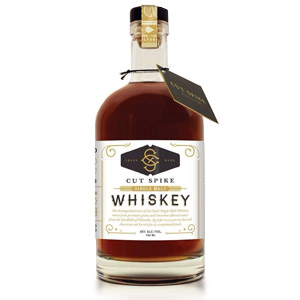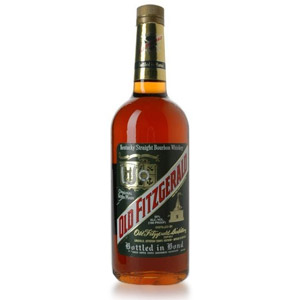Pro tip: If you see the word “Inspired By” in the marketing blurb for a whiskey, you can pretty much assume that entire paragraph is hogwash. The sourcing and selection of whiskey barrels on the secondary market and the subsequent aging, blending, finishing, and bottling of those whiskies may indeed be an art, but it is not like painting or sculpting. ‘Inspiration’ is thin stuff when the actual art form is taking disparate barrels and creating a balanced whole without breaking the bank. Standing on a rugged coast and watching the breakers crash on El Capitán beach may be an inspiring sight, but it does not help you in your efforts to turn the most cost-effective barrels your tiny upstart distillery can get its hands on into something tasty enough to justify a $40 – $50 price tag.
Breaker comes to us (by way of some place in Kentucky, where they actually distill bourbon) from Santa Barbara county, and the name and bottle labels are inspired by the wave ‘breakers’ on the nearby California central coast. That, I can believe. I actually went to school (and did a little surfing, badly) near that area and I will always have a special connection to that coast. That does not predispose me to like a bourbon “from” the area, even if the company claims that the continued aging of (sourced) barrels in the local climate affects the whiskey, spouting some nonsense from student scientists at Cal Poly (I went there, I wasn’t qualified to say stuff like this then, either) about high humidity rolling in from the Santa Rita hills aging the whiskey 4 times faster than Kentucky. See? Hogswash. The climate might have some effect, but the climate of the California central coast is mild, and mild climates require more time to mature whiskey than extreme climates (hot during the day, cold at night) do. Just look at India. Note also that the company doesn’t say how long the whiskey ages in California. They could be buying white dog and maturing it for the whole 5 years in Santa Barbara (I doubt it), or they could be buying 3 year-old bourbon and giving it the extra 2 years by the beach. That’s more likely. Kentucky, specifically, requires any bourbon with “Kentucky” on the label be aged at least a year in the state of its birth.
Two points of order: One, Ascendant Spirits previously sourced its bourbon for Breaker from MGP in Indiana. Now, the bottle says “Distilled in Kentucky”, so who knows where it’s made now, or why the switch. Second, the bottle does not say “Straight Bourbon” on it, which is odd for a “craft” distillery, especially one with an age statement on the label. Your guess is as good as mine, but it may have something to do with the cross-country trip, or perhaps an undisclosed addition of caramel color? Hmm.
At any rate, Breaker creates its small batches from actually small batches of 8 sourced barrels of high-rye bourbon, each at least 5 years of age, and bottles them at 45% ABV. The website is maddeningly short on details, yet lush with photos. If that isn’t a metaphor for today’s whiskey industry then I don’t know what is.
My bottle is from batch #25.
Nose: Piney, like young rye. Basic corn-forward spirit – not too youthful – with a very mild but also pleasant pineapple note. Shy, and a rest in the glass does not reveal additional aromas.
Palate: Syrupy/silky body with a moderate tongue burn. Quite sweet, with elements of caramel, nougat, marshmallow, and tropical fruit jam. Very nice, with no rough edges. The texture is unusual, and pleasant.
Finish: Of medium length. Mild tannins, with leftover tartness from the tropical fruits. Suddenly shy again, fades with only a hint of charcoal bitterness.
With Water: A few drops of water do the worst possible thing: they wash out what little aroma there was! The palate and finish seem unchanged, except for a slight bump in the already-sufficient level of sweetness. Avoid water with this one, and maybe only use it in cocktails where you want the whiskey to take a back seat.
Overall: This might be damning with faint praise, but the whisky has no off notes, and nothing objectionable in its makeup. The aroma has a nice (and rare) pineapple note, but is otherwise shy to the point of boredom. The palate is on the sweet side, but without any challenging aspects (charcoal, tannins, heavy wood, etc.) and aside from the typical tongue burn, is quite easy to drink, with a very nice silky (oh God, I’m going to say it… smooth) mouthfeel. The finish is similar to the aroma in its reticence.
If you like your bourbon sweet and unchallenging then this isn’t a bad choice, although I balk at paying $40 (and especially $50) for a bourbon unless it’s exceptional. This is… just fine, and it has nothing to do with the climate in the Santa Rita hills. I suggest buying your pleasant 5 year-old sourced juice elsewhere, and for less.









There is nothing in the world more fraudulent than “craft” whiskey.
https://www.takimag.com/article/500-years-of-moonshine-might-you-know-taste-better/
Nice link. Thanks for sharing. I agree whole-heartedly with the sentiment…but ending with “pour me a Macallan 15, neat.” Ugh. If you’re going to point out the silliness and über-pretentiousness of the nouveau whisky snobs and hipsters, maybe you should avoid mentioning Macallan. No other distillery has said “fuck quality, let’s cash in NOW” more than Macallan. There seems to be a new, “limited edition”, hilariously overpriced NAS from Macallan every other day. They are the living embodiment of style over substance, of faux luxury, of the absolute stupidity of the whisky industry today.
“Craft”, in the trendy way the word is typically used and understood these days, is not a concept very useful in the production of long-aged spirits. You need years…decades even, to produce quality whisky, and to win a loyal base of customers. 90% of these new producers (insofar as any of them even produce anything) will go under as soon as the next big recession hits. Their plants will be scooped up for a song by the major players, and we’ll be back to square one.
Most “craft” whiskey is an absolute farce. Here in Ontario, Canada, just about every sipping whiskey/whisky is $40 or more. And some of the more well-known sources whiskies are absurdly expensive (*cough*, $90 for Michter’s, you can f*ck right off!). And quite honestly, I’ve yet to find a bourbon I like better than Wild Turkey Rare Breed ($60 here) save perhaps Stagg Jr ($85) and the latter is a lottery item only available 2 or 3 times per year. Heck, Wild Turkey 101 is easily the best $40 bourbon available to me. “Craft” distillers can gtfo until they produce something noteworthy, other than their outlandish and risible marketing stories.
* side note: a recent episode of the Bourbon Pursuit podcast mentioned that MGP prices have been increasing significantly as of late, so maybe that has something to do with these guys sourcing from somewhere else.
The problem with “craft”, much like “smooth” and “small batch”, and even “single-cask”, is that they are presented, and recognized, as positive descriptors without even having a real, much less legal, definition. If anyone was told they were being sold a smooth, small batch single-cask craft whisky, and believed it, they might easily go $20-$30 higher than for others of comparable strength or age (if age is even known).
With the possible exception of scotch, no where is the coating of lore thicker than with bourbon, even to the point of editing history to make more compelling and heroic stories. I’ve often found that people who really know whisky, however, seldom talk about its “magical and intangible” qualities, except for the merchandising benefit to a newbie audience. With only relatively young products from Scotland left to compete with in most people’s price range anyway, MGP (ironically, of Indiana) and those down the food chain have no reason to beat most scotch on price anymore, so the bargain days are coming to an end, even with the boring casking which dominates both bourbon and scotch. So much for the magic of “wood management”.